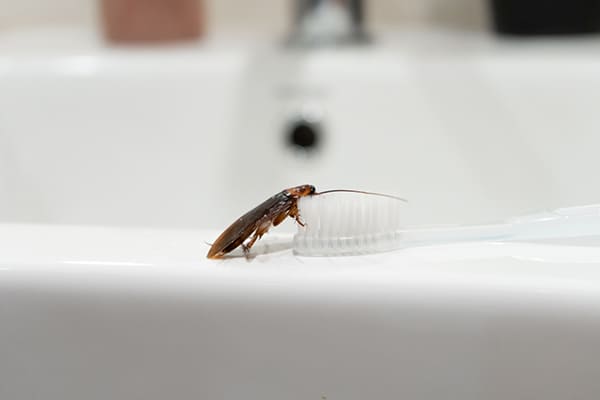One would think that removing the head of a living creature like a roaches would be the end of said living creature. Like pretty close to immediately. Unless you’re a chicken. We all know about running around like a chicken with its head cut off. But what about a creature without a head that still has survivor functionality such as shock avoidance and escape behavior. What if that creature also could resist radiation six to 15 times that of a human’s resistance? And reproduce at stunning rates? It would be reasonable to assume that creature could withstand almost anything. Some say this creature has been able to survive for more than 280 million years and will probably last another 280 million years. Yes, you guessed it, the great sur-thrive-or, the roach.
While evoking an “EW, gross” response from most humans, roaches are actually quite amazing creatures. Their reproduction practices alone can account for much of their sustainability. A single female can produce 300-400 offspring. Some species only need to be impregnated once and can reproduce for the rest of her life. Still others – just a few species – are parthenogenic. That means, they can reproduce without the need for a male. That’s what we call female power!
Roaches are very easy to please as house guests, er… pests.
They are omnivores, which means they eat both meat and vegetables in the wild, but really, they will eat anything. They do have their favorites including greasy foods, meats, and starches. They’ve also been known to nosh on cardboard, dead skin cells garbage and… warning, gross trigger alert… feces. Yes, they will eat poop if nothing else is available. They see no reason to let it go to waste. Get it? Waste? Moving on.

In Florida, we are also the home to Palmetto bugs.
Palmetto bugs prefer to live outside but may be found inside. They are quite a bit larger than the commonly found German cockroach. Palmetto bugs are about 1 ½ inches (38.1 mm) long while German cockroaches are only about a half inch (13-16 mm). Oh, and Palmetto bugs like to fly while German cockroaches prefer to scurry even though they have well-developed wings. Some say Palmetto bugs are just giant flying cockroaches named by Realtors because who wants to buy a house with giant flying cockroaches? Palmetto bugs sound much nicer. However, their name is probably actually derived from the insects’ preferred hangout – among palmetto palm bushes.
We often get calls for new homes with scores of dead roaches. Roaches love to live in abandoned houses and frankly, dead ones are what we want to see. If you have dead roaches, that probably means the pest control is working. However, an inspection and treatment are always a good idea before you move into your new home. Live roaches are another story. If you see live roaches, you need to call us for an inspection and treatment immediately. For every live roach you see, there could be 1,000 more hiding and the sooner we treat, the sooner we stop the reproduction cycle.
There are several at-home remedies, some smelly, some messy, some just a little silly to get rid of roaches.
You can try to avoid infestation by not leaving food out in the open and leaving cardboard outside. You can also re-insulate your attic with pest-resistant insulation to reduce a cockroach invasion.
The challenge is that not all roaches are the same. We can best treat roaches when we know what we are dealing with. Saying you have roaches is like saying you have humans or dogs or cats. Even though all roaches have the same biology, there are many differences (re-read the sur-thrive-or section above) that help them adapt and breed.

Tempco’s treatments are pet and child-friendly.
All the products we use are environmentally-friendly and deemed safe to use in kitchens around food. We typically use a variety of methods to treat roaches. Although baiting is one method where roaches grab some grub to share with their friends, other methods include an Insect Growth Regulator (IGR). Think of it as roach birth control. If a roach can’t reproduce, the nest will eventually die out. There is often an increase in roach activity a day or two after treatment, but then, homeowners notice them on their backs – which is what we want.
Roaches are most definitely going to be with us, probably until the end of times. But that doesn’t mean we have to welcome them into our homes. Tempco is certified to treat all types of roaches as well as install pest-resistant insulation. If you notice roach activity including live insects or something that resembles coffee grounds (roach poop), give us a call.